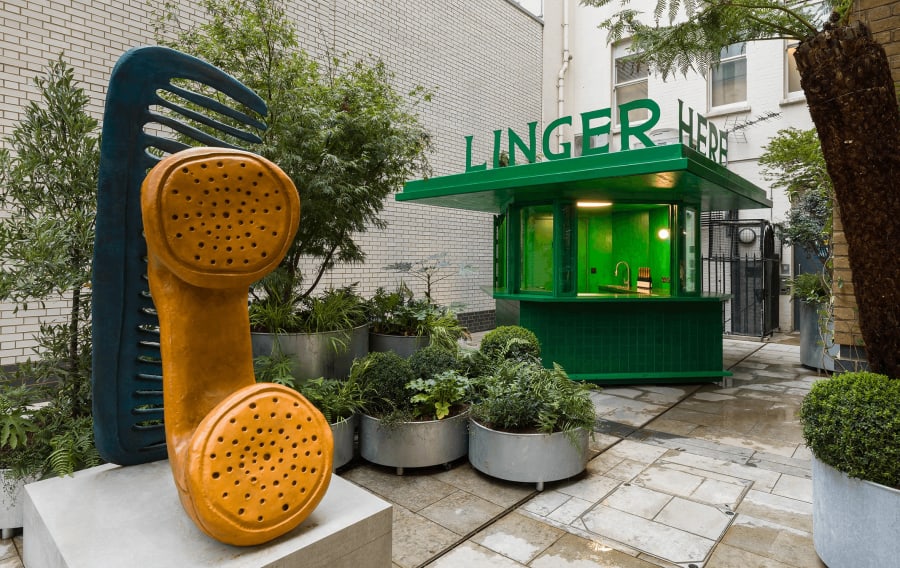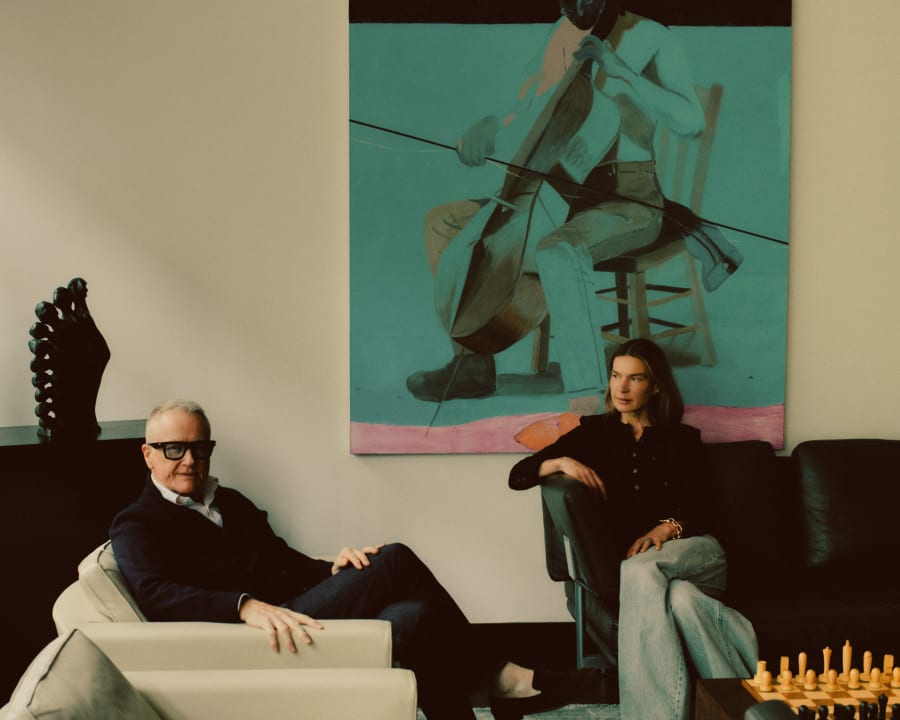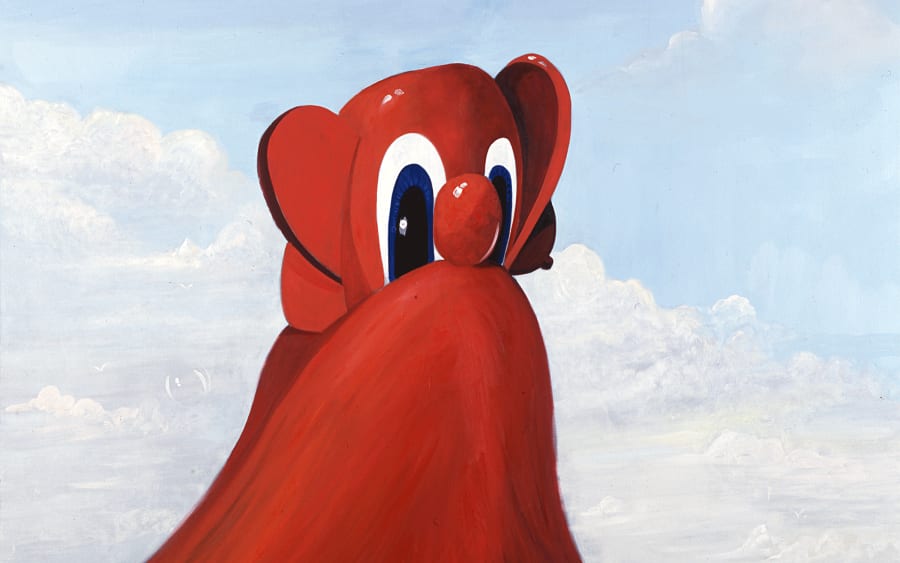St James’s is a place where nothing seems to change. Bounded by the swish affluence of Mayfair, the green expanses of the royal parks, and the relative grunge of Soho, the London district south of Piccadilly has the feel of a museum piece – venerable and sculpted from stone.
But the air of timelessness has always been an illusion. St James’s has never stopped evolving, for the good and the bad. French Railways House, a 1960s Modernist icon on the south side of Piccadilly, was demolished last year to make way for a new, identikit office block. But then in 2023, the gentlemen’s club Pratt’s – satirized as Bratt’s in Evelyn Waugh’s Brideshead Revisited (1945) – admitted women members for the first time in its 166-year history.
Art dealing in St James’s has undergone its own transformation – and change is accelerating. For more than 250 years, the area has been the domain of Old Masters and antiques dealers. But contemporary galleries have increasingly been joining their ranks. Modern Art, which counts Eva Rothschild and Collier Schorr among its artists, opened a boutique gallery on Bury Street in 2020 to go with its industrial Clerkenwell space. It is now about to relocate to a larger flagship on Bennet Street, in the shadow of the Ritz Hotel. ‘It feels like the right moment for Modern Art to expand,’ says founder and director Stuart Shave. ‘For me, this area, as an extension of Mayfair, remains the true center of art dealing in London.’
It wasn’t always thus. When Jay Jopling’s White Cube opened at 44 Duke Street in 1993, his contemporary gallery was an anomaly. ‘Next to the entrance hung a sign for a neighbouring business selling “Rare Coins and Medals,”’ remembers Gregor Muir in his 2009 chronicle of Young British Artists, Lucky Kunst. When Tracey Emin and Damien Hirst first began showing at the gallery in the early 90s it was quite a change of scenery for them. ‘It all seemed at odds with the image of struggling Goldsmiths artists putting on group shows in derelict East End buildings,’ notes Muir.
Jopling’s gallery – a single room on the first floor – ran on the premise that an artist could only show there once. Even as the art scene in east London grew – and Jopling opened a flagship space on Hoxton Square – the original White Cube (which closed in 2002) marks an important chapter in the story of Londonʼs rise to global art market dominance.
Shoreditch’s turn-of-the-millennium cool didn’t keep Jopling away from St James’s for long. In 2006, he built a sleek new HQ on the site of an electricity substation in Mason’s Yard, a one-minute walk away from his first gallery, opening with a monumental show by Gabriel Orozco that featured a 14-meter rorqual whale skeleton suspended from the ceiling. ‘Coming back to St James’s is a little bit like coming home,’ Jopling said at the time. ‘I’ve always wanted to collide the avant-garde with the Establishment.’
And that, perhaps, strikes at the peculiar appeal of the area – the scope for a collision between old and new, tradition and innovation. ‘St James’s has a rich history of art dealing, which today on street level exists as a fascinating hybrid of genres,’ remarks Modern Artʼs Shave. ‘On Bury Street, you encounter antiquarian book and map dealers, Modern British, antique ceramics, and Chinese antiquities in the immediate area interspersed with galleries such as Thomas Dane, Sadie Coles, and Ben Hunter, all contributing robust newer layers.’
St James’s has always had an aristocratic character. It was once the garden and hunting ground of St James’s Palace, before being developed into a residential quarter in the 17th century. There’s a legend that Charles II’s mistress Nell Gwynne used to visit him by means of a tunnel running from the cellar of the Red Lion pub on Crown Passage.
On the end of St James’s Street, up from St Jamesʼs palace, just across Piccadilly, is the Royal Academy (RA). Founded in 1768 under the royal patronage of King George III, it was London’s answer to the great art academies of France and Italy. (The RA’s current exhibition of paintings by Kerry James Marshall, titled ‘The Histories’, is a potent reminder of the dual allure and difficulty of the Western canon for a Black artist.)
‘I can’t imagine art dealing or making exhibitions without all those historical layers,’ says François Chantala, partner of Thomas Dane Gallery, which opened at 11 Duke Street in 2004. The gallery still occupies this space on the first floor of an 18th-century townhouse – as well as a ground-floor unit further along the road (the two locations will host an exhibition this fall by American painter Dana Schutz). The wood-paneled corridor that leads to the former feels like stepping into a more genteel past. ‘It’s somewhere between a glorified apartment and what an American artist once described as a cigar box,’ Chantala says.
For artists, he adds, there’s a special attraction ‘to being in a place that defies time.ʼ St Jamesʼs, remarks Chantala, ʻdoesn’t conform to the scale and spirit of other contemporary art districts in other cities.’ Certainly, the areaʼs ‘cigar-box’ galleries lend themselves to a smaller-scale – more understated – form of work. Sadie Coles HQ, which opened a satellite gallery on Bury Street in 2021, will this October, host a group of drawings by Helen Marten – paintings superimposed by smaller, fastidious drawings that have a silverpoint delicacy about them, and that seem to demand an intimate viewing context.
In several instances, contemporary galleries have mirrored the historical character of the area by incorporating more traditional art into their programs, like for example Postwar British. Dealer Frankie Rossi, based on Bury Street, has exhibited the work of living artists Maggi Hambling and Celia Paul, as well as mid-20th-century luminaries. Ben Hunter, who founded his eponymous gallery in 2018, likewise straddles Postwar and contemporary. He has operated out of Jopling’s former space at 44 Duke Street for five years – and has just expanded his gallery to occupy the entire Georgian house.
‘It was an amazing opportunity to honor the building’s heritage,’ Hunter says of his decision to reconfigure the interiors according to their original layout. Like other gallerists in St Jamesʼs, he prizes the area’s ‘slightly old-fashioned feeling. It’s something I can offer my artists as a point of differentiation.’
The establishment vibe of St James’s might not be considered hip – few artists are likely to be found hanging out in members-only clubs like the Carlton or Whiteʼs – but the ‘oldy world’ ambience still holds an uncanny fascination. As Chantala puts it: ‘Artists are informed by the past, sometimes in a reactionary way, sometimes as homage, either as an inspiration or purely as a matter of curiosity.’
Nor is the area wholly devoid of countercultural cachet. William S. Burroughs, Beat writer and devout hedonist, lived at number 8 Duke Street during the 1960s. According to J.G. Ballard, one attraction for Burroughs was the proximity of Piccadilly Circus underground station – a popular cruising spot.
The gallery scene in St James’s provides a counternarrative to reports of a contracting contemporary market. ‘People are doubling down on this area,’ says Hunter. ‘It feels very alive.’ Alongside the established galleries that have congregated in St James’s are younger, emergent spaces. Saatchi Yates, run by Phoebe Saatchi and Arthur Yates, moved from Mayfair to Bury Street in 2023. ‘St James has good ghosts,’ says Saatchi. ‘We sit in between the oldest galleries in London and the newest.’ The gallery’s bumper-sized group exhibitions have a degree-show vibe that cuts through the formality of its more seasoned neighbors.
‘St James’s epitomizes what makes London unique,’ says Chantala. ‘It embodies its spirit, its scale, its humanity – and its old-fashionedness.’ And the rarefied nature of the area is precisely what appeals to contemporary galleries, their artists and their patrons. If that appeal feels incongruous, then incongruity may be the point.
James Cahill’s second novel, The Violet Hour, is published in the UK by Sceptre Books, and forthcoming in the US in March 2026 from Pegasus Books.
Caption for header image: Burlington House, Royal Academy of Arts, London. Photograph by Fraser Marr.
Published on October 10, 2025.


